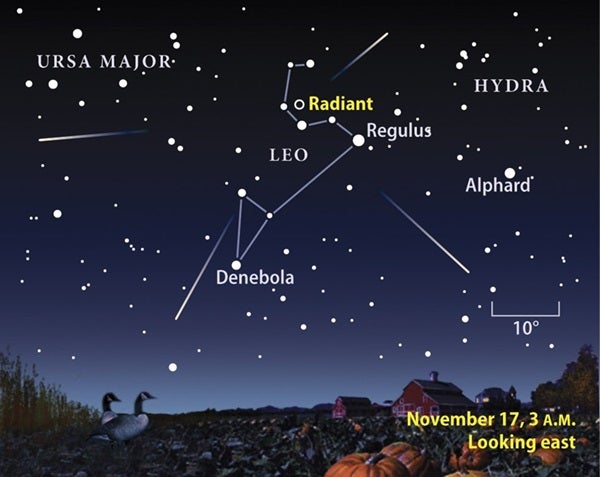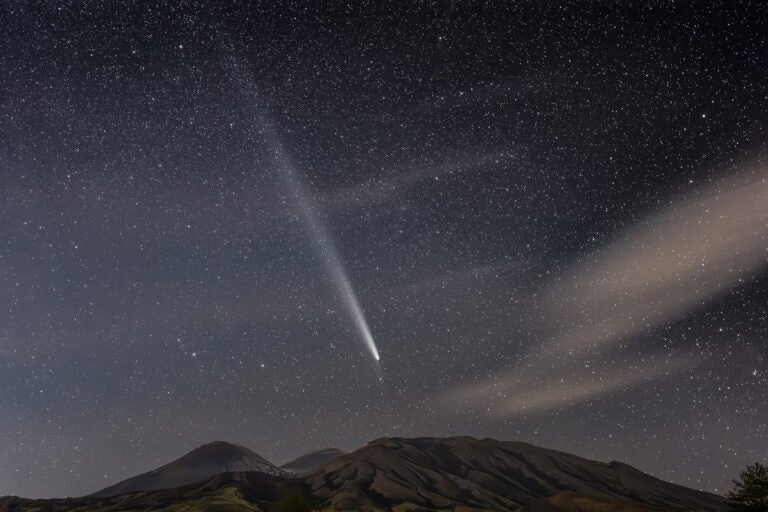As the days get colder and shorter, the return of the Leonid meteor shower grows closer as well. The annual shower lasts from November 10 through the 23rd and peaks before dawn November 17. Unfortunately, Full Moon arrives November 21, so its light will interfere with meteor watching until after midnight.
While it can’t compete with last year’s spectacular display, this year’s show still promises excitement. “Observers under a dark sky can expect to see around 20 meteors per hour radiating from the constellation Leo the Lion,” says Astronomy Senior Editor Richard Talcott. “The best time to watch on the 17th comes once the Moon sets around 3 a.m. local time.”
The Leonids started out as tiny specks of dust and debris ejected by Comet 55P/Tempel-Tuttle during its countless voyages orbiting the Sun. As Earth passes through this stream of dust, the particles hit our atmosphere at about 158,000 mph (256,000 km/h), vaporizing due to air friction. This produces the streaks of light in the sky we call meteors.
“Observers occasionally see a brief increase in meteors when Earth crosses the thickest section of the comet’s debris trail, though this occurs after daybreak in North America,” says Talcott. “It may not be perfect, but the Leonids will still provide skygazers much to see this year.”
- Podcast: How to observe the 2010 Leonid meteor shower, with Michael E. Bakich, senior editor
- Video: How to observe meteor showers, with Michael E. Bakich, senior editor
- StarDome: Locate the Leonid meteor shower’s radiant in your night sky with our interactive star chart.
- Sign up for our free weekly e-mail newsletter.












